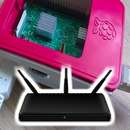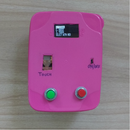Introduction: USB Led Light
If we search this title in any search engine, many products will show up on your screen. These products have one functionality i.e. to light up when connected to a USB port. After looking at these products for a while, I was ready to make one of these product on my own. It is really simple, believe me.
Lets get started.
Step 1: Design Decisions
We need to make 2 design decisions for our USB led light.
- Which LED should we use ?
- It will depend on the intensity of light we wish to generate from this product. I decided not to go with our normal usage 3mm/5mm LEDs, instead I decided to go with higher luminescence LED (image is attached).This decision was driven by the fact that USB 2.0 can supply up to 500 mA of current, which can easily power this high luminescent LEDs.
- What value resistor should I connect in series with the LED to limit it's current?
- Value of current limiting resistor depend on 3 things:
- Supply voltage (In our case it is 5 V i.e. standard USB supply voltage),
- Voltage drop across LED and
- Amount of current we wish to flow through LED.
- Value of current limiting resistor depend on 3 things:
In 2nd decision question, we have two unknown quantity voltage drop across LED and Amount of current we wish to flow through LED. Current flowing through LED will decide the intensity of light it will generate. To find out these two variables we shall do a small experiment.
Step 2: Small Experiment
Here are the details about our small experiment.
Here is the list of components needed for doing this experiment.
- Bread board,
- Multi-meter,
- 5 V breadboard power supply (any 5 V supply will work),
- Potentiometer ,
- LED under test (LED for which we wish to find voltage drop and current required).
Connect these components as per the attached fritzing sketch.
Step 1-
In this step we will find out the voltage drop across the LED. Initially keep the potentiometer at it's full resistance, slowly decrease value of resistance by rotating the nob. Try to attain your desired brightness, make sure that LED is not heating up. Now measure the drop across the LED using multimeter by connecting it in parallel to LED. So this part will give us the voltage drop across the LED.
Step 2-
Now disconnect any one of the wire and put multimeter in series with the circuit in current mode. Measure the current needed for this desired brightness.
We are done with the experiment. Directly measuring the resistance of potentiometer will give us the answer for our ultimate question about the value of resistance or we can use following links to calculate the value of resistance. http://www.digikey.com/en/resources/conversion-cal...
I prefer the former.
In case of any doubt just refer to attached video.
Step 3: We Are Ready
Finally we are set to put all things together.
Following is the list of things needed to build our USB LED light.
- General purpose circuit board,
- One USB-A male connector,
- Two 15cm single core wires (with good stiffness),
- LED for which we have calculated desired resistance,
- Heat shrink (to cover solder joints),
- Solder wire and iron.
Now connect these components as per the attached fritzing sketch.
In case of any doubt just refer the attached video.
Step 4: My Prototype
Here are images of prototype that I have made. Its not that neat, I suggest using a spare Pen-drive casing for final product.
Image of my friend trying to read using this light is also attached.
Thank you for your time. In case of any doubt refer to this video.

Participated in the
Hack Your Day Contest

Participated in the
Full Spectrum Laser Contest 2016













